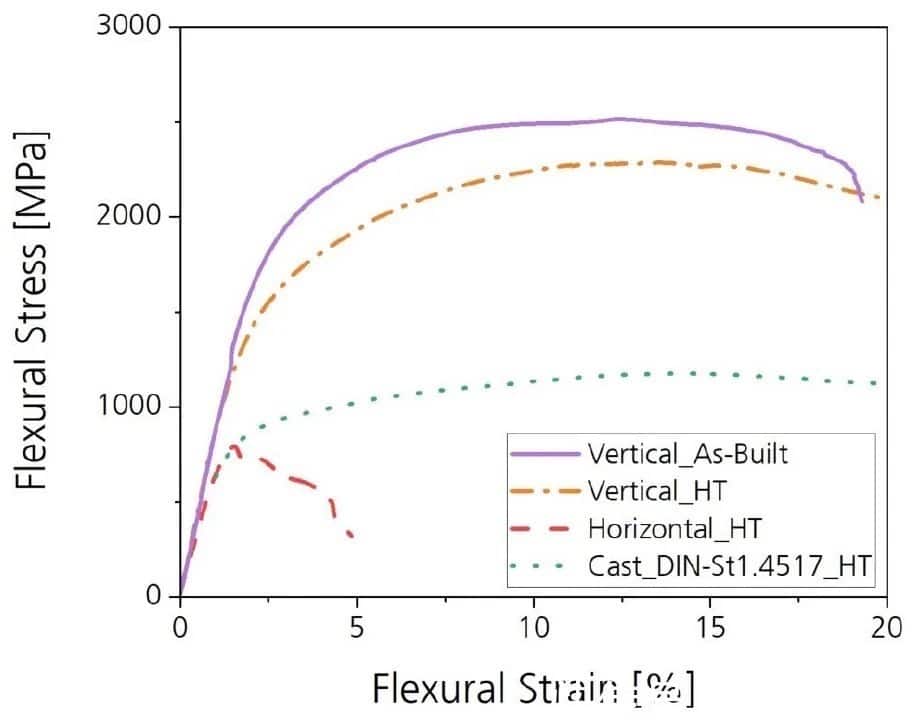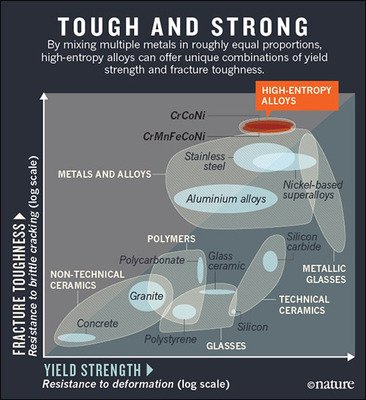高熵合金是近十年兴起的新材料。主要是指由五种以上等量或近似等量的金属组成的合金。高强度、高硬度、耐腐蚀、耐磨、耐高温、抗辐射、软磁性等优点都是高熵合金能够得到市场认可的原因。尤其是在高温、高压、高速等极端环境下,采用高熵合金制成的金属零件能够保持良好的机械性能。此外,高熵合金在恶劣的气候环境、腐蚀性溶液和强动载荷下性能优异。因此,高熵合金在海洋工程、核工业、发动机工业、硬质工具工业等方面具有广阔的应用空间。这些航天高熵合金应广泛应用于海洋工程、核工业、发动机工业和硬质工具工业。
As a landmark technology that set off the fourth industrial revolution, the additive manufacturing industry of 3D printing has always been highly expected by the state. In order to regulate the production increasing manufacturing industry, the state plans to revise a series of relevant standards for guidance. High entropy alloy powder for additive manufacturing is an important raw material for additive manufacturing of high entropy alloy. At the same time, additive manufacturing technology can be used to develop and prepare high entropy alloy parts with small batch and complex shape. In addition, the high entropy alloy parts prepared by additive manufacturing technology have fine grains and uniform structure and composition, which can effectively solve the disadvantages of coarse crystal structure, internal porosity and component segregation of traditional high entropy alloy materials, greatly accelerate the speed and response time of new product development, and promote the wide application of high entropy alloy in various fields. Therefore, the national testing standard of high entropy alloy powder for additive manufacturing is also being formulated.
The key performance test indexes and process performance parameters of high entropy alloy powder mainly include chemical composition, particle size, loose density, tap density, fluidity and so on. The additive manufacturing process needs to realize densification forming. Different additive manufacturing processes have different requirements for the particle size of the powder, and the performance indexes such as chemical composition, loose density, vibrated density and fluidity of the powder will not only affect the additive manufacturing process, but also affect the microstructure, mechanical properties, dimensional accuracy Surface quality, etc. Let me introduce these key test indicators in detail.

Chemical composition analysis
At present, the brands of high entropy alloy powder for mass production additive manufacturing mainly include feconicrmn, feconicrmo, feconicral, feconicrti and feconicr. Among them, the main elements in the chemical composition of the five high entropy alloys are composed according to the equal atomic ratio, and then converted into the corresponding mass percentage; Impurity elements mainly include oxygen, nitrogen, gas elements, carbon, phosphorus, sulfur and other impurities. By investigating the chemical composition report of high entropy alloy powder produced by relevant units and the actual application requirements, an appropriate and reasonable chemical composition range is set. The content analysis of main elements Fe, Mn, Ni, Mo, Co, Cr, Al, Ti and impurity elements C, s, P, O and N in the product shall be carried out according to the method determined by the supplier and the buyer through negotiation.
Particle size detection
The particle size range of high entropy alloy powder prepared by different processes is different, but it can be graded by screening. Referring to the use, particle size composition, particle size range and particle size distribution of different high entropy alloy powders, we can divide the particle size into two categories, as follows:
Class I requirements: F is applicable to the field of selective laser melt additive manufacturing. Selective laser melt additive manufacturing technology is mostly used to manufacture precision parts with small size and high surface finish requirements, and the size is less than 63 μ M fine high entropy alloy powder, because usually fine powder can directly obtain parts with high precision and good surface finish, the powder particle size range in this field is ≤ 63 μ m. Particle size group: > 63 μ M is not more than 5%, D10 is 15 μ m~25 μ m; D90 is 50 μ m~65 μ m;;
Class II Requirements: F is applicable to the field of laser cladding and electron beam melting additive manufacturing. The energy density of laser and electron beam is high, the particle size of fusible powder is larger than that required by selective laser melting additive manufacturing technology, and the manufacturing efficiency is higher. The particle size range of powder required in this technical field is 45 μ m~150 μ m. Particle size group: ≤ 45 μ M is not more than 5%, > 150 μ M is not more than 5%, D10 is 40 μ m~55 μ m; Not more than D90 μ m;
Loose density detection
The bulk density of powder is the bulk density measured after the powder freely fills the standard container under the specified conditions, that is, the mass per unit volume when the powder is loosely filled. It is a process performance of powder. Bulk density is the comprehensive embodiment of various properties of powder, which can reflect the density, particle shape, particle density and surface state, particle size and particle size distribution of powder. The more regular the shape of powder particles, the smoother the particle surface and the denser the particles are, the greater the loose density of powder will be. Generally, the bulk density decreases with the decrease of particle size, the increase of particle non spherical coefficient and the increase of surface roughness.
Loose density test requirements:
Class I requirements: the loose density of ffeconicrmn shall not be less than 3.8g/cm3, and that of feconicrmo shall not be less than 4.2g/cm3,
The loose density of feconicr shall not be less than 4.0g/cm3, and the loose density of feconicral and feconicrti shall not be less than 3.2g/cm3;
Class II Requirements: the loose density of ffeconicrmn is not less than 4.0g/cm3, that of feconicrmo is not less than 4.4g/cm3, that of feconicr is not less than 4.2g/cm3, and that of feconicral and feconicrti is not less than 3.4g/cm3;
Vibration density detection
The vibrated density is the powder density in which the powder reaches an ideal arrangement state through mechanical vibration in the container. The percentage increase relative to the loose density is the comprehensive embodiment of various physical properties of the powder, such as powder particle size and its distribution, particle shape and its surface roughness, specific surface area, etc. The greater the compaction density of the powder, the better the relative fluidity of the powder.
Loose density test requirements:
Class I requirements: the compaction density of feconicrmn shall not be less than 4.4g/cm3, that of feconicrmo shall not be less than 5.0g/cm3, that of feconicr shall not be less than 4.4g/cm3, and that of feconicral and feconicrti shall not be less than 3.8g/cm3;
Class II Requirements: the compaction density of ffeconicrmn is not less than 4.6g/cm3, that of feconicrmo is not less than 5.2g/cm3, that of feconicr is not less than 4.6g/cm3, and that of feconicral and feconicrti is not less than 4.2g/cm3;
Liquidity test
Fluidity refers to the time required for a certain amount of powder to flow through a standard funnel with a specified aperture. Hall flow rate funnel is usually used, and the fluidity unit is s / 50g, which indicates the difficulty of powder flow. The smaller the value, the better the fluidity. The particle size, humidity, static electricity and whether the powder is spherical will affect the flow characteristics of the powder. Whether for the additive manufacturing process of powder laying or powder feeding, the fluidity of powder will affect the additive manufacturing process and part performance. Specific requirements are as follows

The above are the inspection indicators required by the national plan for high entropy alloy powder for additive manufacturing. Before that, China had no relevant national standards or industrial standards for high entropy alloy powder for additive manufacturing, and there were no relevant standards in the world for reference. Therefore, it is the first time to formulate the standard of high entropy alloy powder. However, the industry and technology of high entropy alloy manufacturing have been quite mature and stable in China. According to relevant enterprise standards and technical data, the index requirements of the national standards formulated this time also far exceed the product quality requirements in the international market. Therefore, relevant enterprises can refer to the above indicators to control the quality of their own products.







